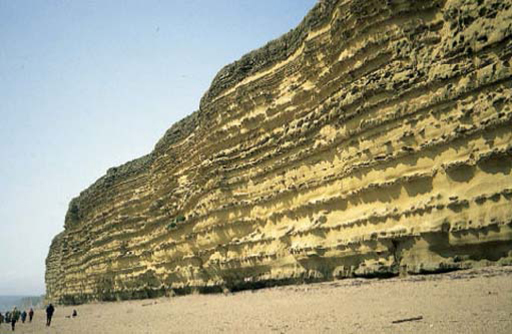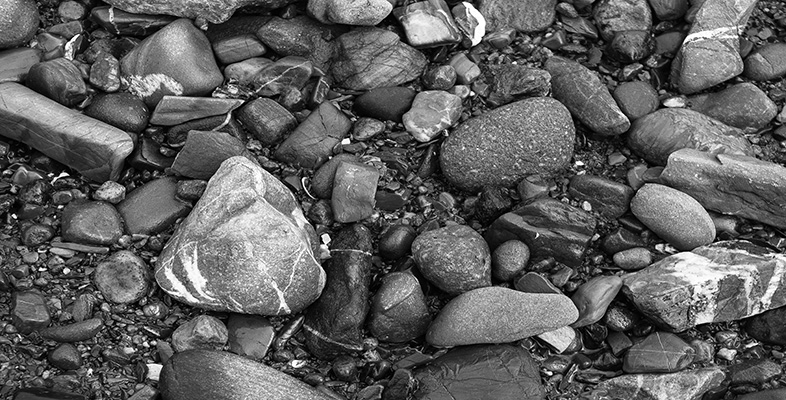1.4.3 Sedimentary strata
We've seen that the detective work of piecing together a part of Earth's history from sedimentary rocks involves detailed investigation of rock samples, but this can give only a partial picture. On the larger scale of a rock exposure, there can be plenty for us to see and to interpret. Sedimentary rocks are usually found as layers referred to as strata (Figure 10), with each stratum (layer) recording the particular conditions at the time of its deposition. (Note: sedimentary layers are often referred to as beds, but strictly speaking the term ‘bed’ is reserved for those strata thicker than 1 cm; thinner layers are known as laminae (singular lamina).) Over time, conditions may have changed, either gradually or quickly, causing the nature of the sediment being deposited to change. In this way, a vertical stack of sedimentary strata is a record of changing conditions during a segment of geological time. The oldest sediments will be at the bottom, with progressively younger strata laid down on top. Geologists refer to this as the principle of superposition – older rocks are overlain by younger rocks; an individual layer is younger than the one beneath it and older than the one above it; the oldest layer lies at the bottom. This provides a relative time-scale. Changes in sedimentary rocks (or in the types of fossil they may contain) up through a sequence of strata provide a record of changing conditions over the passage of time throughout which the rocks were deposited.

